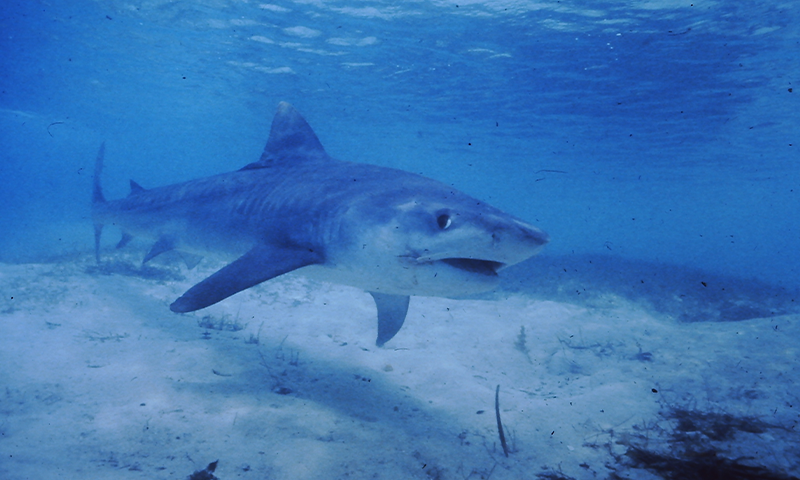
The Shark Whisperer - Nautilus
I n the 1970s, when a young filmmaker named Steven Spielberg was researching a new movie based on a novel about sharks, he returned to his alma mater, California State University Long Beach. The lab at Cal State Long Beach was one of the first places in the United States to study sharks in a rigorous way. Spielberg was developing a character who was a shark researcher, so he sent an art director to campus. There, the art director found the office of Donald Nelson, the unflappable biologist, spear fisherman, and shark fanatic who founded the lab in 1966. Nelson’s office was an art director’s dream, filled with maps, scientific papers, shreds of napkins with engineering plans on them, various shark repellents.
The director took every single piece of paper—all the photographs, nautical charts, scribbled notes on napkins—off the wall and made photocopies. Then he put all these pieces back in their places, one by one. He used them to build the character of Matt Hooper, the charismatic double-denim-wearing shark scientist played by Richard Dreyfuss.
The movie was, of course, a smash hit. It earned over $260 million in its initial domestic release in 1975, enough to make it the biggest moneymaker in Hollywood history to that point. It also left its mark on the reputation of sharks. The opening lines alone, backed by that daggered two-note musical score, gave a sense that sharks were a nearly demonic force: “It lives to kill. A mindless eating machine. It will attack and devour anything. It is as if God created the devil, and gave it … jaws.” David Shiffman, a marine biologist and author of Why Sharks Matter, says, “Jaws made a generation absolutely terrified of sharks.”


/https://public-media.si-cdn.com/filer/9f/61/9f610676-9962-4627-ae89-bf59fc6cb735/lod_mosaic_lower_register_web.jpg)















